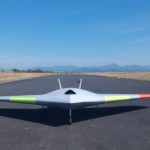In what is being hailed as a first for medicine and aviation, an unmanned aircraft has delivered a donor kidney to surgeons for successful transplantation into a patient.
A University of Maryland unmanned aircraft has delivered a donor kidney to surgeons at the University of Maryland Medical Center (UMMC) in Baltimore for successful transplantation into a patient with kidney failure.
The researchers say this successful demonstration illustrates the potential of unmanned aircraft systems (UAS) for providing organ deliveries that, in many cases, could be faster, safer and more widely available than traditional transport methods.
The flight on April 19 was a collaboration between transplant physicians and researchers at the University of Maryland School of Medicine (UMSOM) in Baltimore; aviation and engineering experts at the University of Maryland (UMD); the University of Maryland Medical Center; and collaborators at the Living Legacy Foundation of Maryland (The LLF).
Engineering for humans
“This history-making flight not only represents a breakthrough from a technological point of view but provides an exemplary demonstration of how engineering expertise and ingenuity ultimately serve human needs – in this case, the need to improve the reliability and efficiency of organ delivery to hospitals conducting transplant surgery,” said Darryll J. Pines, Ph.D., dean of the A. James Clark School of Engineering and Nariman Farvardin Professor of Aerospace Engineering. “As astonishing as this breakthrough is from a purely engineering point of view, there’s a larger purpose at stake. It’s ultimately not about the technology; it’s about enhancing human life.”
Technology breakthroughs
The mission involved several technological ‘firsts’ the team says.
These include:
- A specially designed, high-tech apparatus for maintaining and monitoring a viable human organ
- A custom-built UAS with eight rotors and multiple powertrains to ensure consistently reliable performance, even in the case of a possible component failure
- The use of a wireless mesh network to control the UAS, monitor aircraft status and provide communications for the ground crew at multiple locations
- Aircraft operating systems that combined best practices from both UAS and organ transport standards.
“We built in a lot of redundancies because we want to do everything possible to protect the payload,” explained Anthony Pucciarella, director of operations at the UMD UAS Test Site.
These safeguards included back-up propellers and motors, dual batteries, a back-up power distribution board and a parachute recovery system (in case the entire aircraft failed).
“Amazing”
The kidney recipient, a 44-year-old woman from Baltimore who spent eight years on dialysis before undergoing the transplant procedure, said: “This whole thing is amazing. Years ago, this was not something that you would think about.”
She has now been discharged from UMMC.

